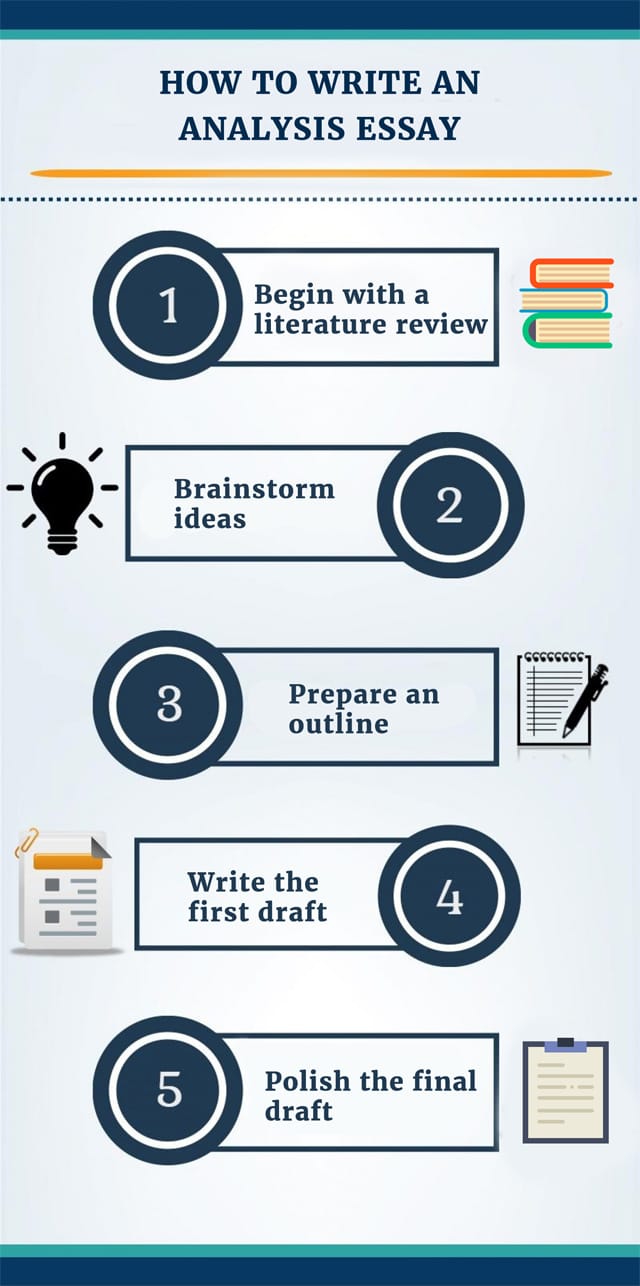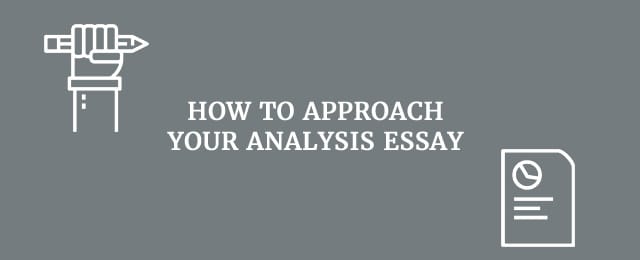How to Write an Analytical Essay: Top 7 Rules for a Good Analysis
It is standard to have to write an analysis essay in college or university. You might be asked to analyze a research paper, a movie, a company, a book, or an event or allowed to choose from a selection of analysis essay topics.
But what about actually writing a critical essay?
Regardless of what you are required to analyze, a critical analysis essay must be written according to a series of rules that will ensure you have right the structure and content of the analysis paper.
Keep reading to learn the top 20 rules for writing an analysis paper from assignment24x7.com experts…
1. Basic Principles
Before you learn how to start a critical essay, you should understand some fundamentals of writing this paper. In other words, you must understand how to write a good analysis.
Essentially, when writing an analysis paper, you aren’t just describing the topic (the what); you write about peculiarities and essence of the topic.

Analytical essay
When writing a critical analysis essay, you will need to do the following throughout your paper:
-
Explain the meaning of the topic
-
Analyze the topic without bias
-
Compare the topic of the essay to something relevant. You can most easily do this by uncovering the pros and cons of the topic and what it is being compared to.
-
Evaluate the subject by providing an argument and defending that opinion with evidence to support it
In order to do this, you will have to compose a thesis statement.
2. Getting Started
The key to writing an analysis paper is to choose an argument that you will defend throughout your paper. In this case, you will do an analysis of a specific topic. Your argument will focus on a thesis, which you will present as a thesis statement.
The first and imperative thing is to think about your thesis statement. In the case of Captain America example, it could be:
Captain America: Civil War adequately captures the issue of giving up personal freedom for the sake of national security, a situation that mirrors actions taken by the government in recent years.
Northwestern College and The University of North Carolina at Chapel Hill both give a great explanation of the thesis statement, how to create one, and what its function is.
But that’s not all:

Analytical essay
Once you have your thesis statement, you need to break down how you will approach your analysis essay to prove that thesis statement. To do this, follow these steps:
-
Define the main goal(s) of your analysis. Remember that it is impossible to address each and every aspect in a single paper. You probably have a limit on the word count, and let’s face it; you have more interesting things to do than write 10,000 words on how Captain America: Civil War handled the national security versus personal freedom issue. Know your goal and focus on it.
-
Conduct research, both online and offline, to clarify the issue contained within your thesis statement.
-
Identify the main parts of the issue by looking at each part separately to see how it works.
-
Try to clearly understand how each part works
-
It helps to try to identify the links between the various aspects of the topic.
-
By using the information you found, try to solve your main problem.
At this point, you should have a clear understanding of both the topic and your thesis statement. You should also have a clear direction for your analysis paper firmly planted in your mind and recorded in writing.
This will give you what you need to produce the paper’s outline.
3. Creating an Outline
When creating an outline for an analytical paper, there is an analysis essay outline format you should follow. The standard essay generally consists of five paragraphs, as follows:
-
Introduction
-
Body’s first paragraph
-
The second paragraph of the body
-
The third paragraph
-
Conclusion
You need to utilize gathered information and the arguments you have decided to use and figure out how to express them in your analysis essay.
Ideally:
You will choose the top three arguments and assign one body paragraph to each.
However, there is one more thing you must do before you start writing…
4. Choosing a Title
Choosing a title seems like not a significant step, but it is actually very important. The title of your critical analysis paper should:
-
Entice and engage the reader
-
Be unique and capture the readers’ attention
-
Provide an adequate explanation of the content of the essay in just a few carefully chosen words
In Captain America example, your title could be:
“The Genius behind the Portrayal of Security vs. Freedom in Captain America: Civil War”
And now the time has come:
You are ready to start writing! So, let’s begin at the beginning with…
5. Writing the Introduction
This is when you get those fingers moving on the keyboard.
But first:
You must understand how to compose an introduction to an analysis paper. The University of Wollongong describes the introduction as a “map” of any writing. This map is created to show the reader an outline of the information to be discussed. When writing the introduction, follow these steps:
-
Provide a lead-in for the reader by offering a general introduction to the topic of the paper.
-
Include your thesis statement, which shifts the reader from the generalized introduction to the specific topic and its related issues to your unique take on the essay topic.
-
Present a general outline of the analysis paper.
The key is:
You need to hook the reader right from the beginning. Draw them in by portraying the topics and issues in a tempting way so that your readers will keep reading.
Watch this great video for further instruction on how to write an introduction to an analysis essay.
6. Writing the Body
The body of the paper may be compared to its heart. This is where you show off your talent for analysis by providing convincing, well-researched, and well-thought-out arguments to support your thesis statement. You have already gathered the information and now all you may start crafting your paper.
To make the body of an analytical essay, keep the following in mind:
-
Discuss one argument per paragraph, although each argument can relate to multiple issues
-
Strike a balance between writing in an unbiased tone, while expressing your personal opinion
-
Be reasonable when making judgments regarding any of the issues you discuss
-
Remember to include the opposing point of view to create a balanced perspective
You want to offer opposing views, but you must pose your arguments so they will counter those opposing views and prove your own point of view. Follow these steps when constructing each body paragraph:
-
Choose the main sentence. The main or topic sentence will be the first line in your essay. The topic sentence is responsible for presenting the argument you will discuss in the paragraph and demonstrate how this argument relates to the thesis statement.
-
Provide the context for the topic sentence, whether it relates to a quote, a specific incident in society, or something else. Offer evidence on who, what, where, when, why, and how.
-
Give your analysis of the argument and how it adequately proves your thesis.
-
Write a closing sentence that sums up the paragraph and provides a transition to the following paragraph.
Now that you have an expertly written body for your analytical paper, it is time to finish your essay with…
7. Writing the Conclusion
The conclusion is short and sweet. It summarizes everything you just wrote in the essay and wraps it up with a nice shiny bow. Follow these steps to write an effective conclusion:
-
Repeat the thesis statement and summarize your argument.
-
Take your argument beyond what is simply stated in your paper. You want to show how your argument is important in terms of the bigger picture. For instance, how does proving your Captain America thesis statement—Captain America: Civil War adequately captures the issue of giving up personal freedom for the sake of national security, a situation that mirrors actions taken by the government in recent years. Also, you may dwell on the influence on citizens of the country.
Now you are ready to write an analysis essay! See, it’s easier than you thought.


